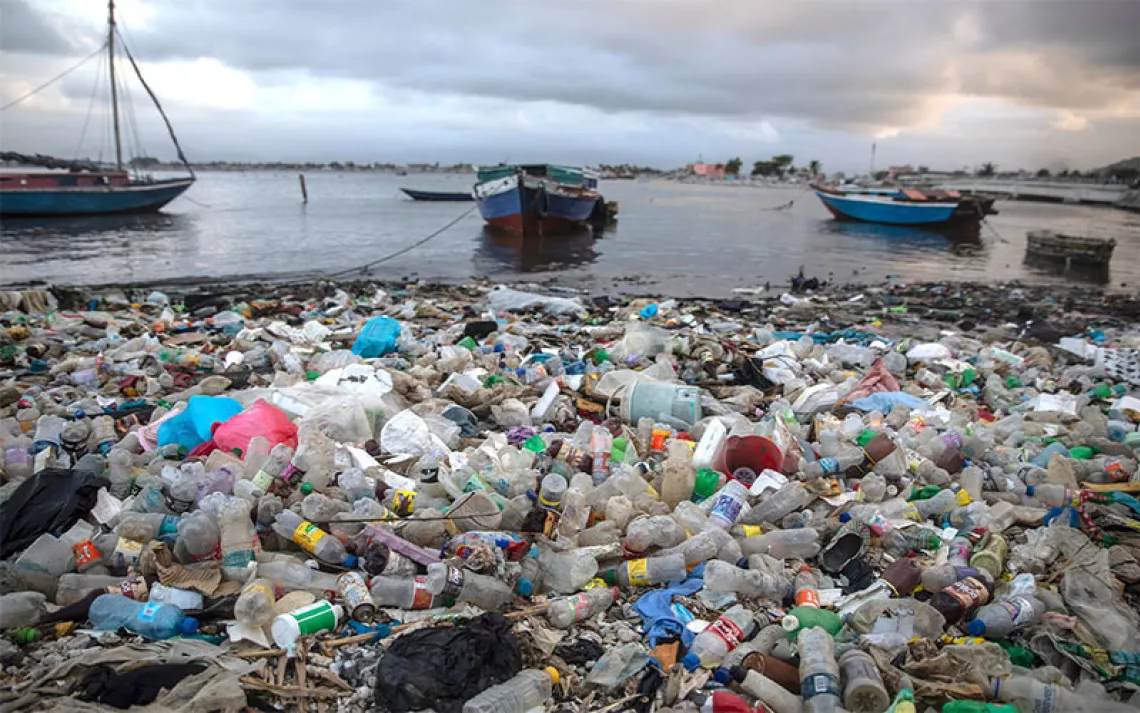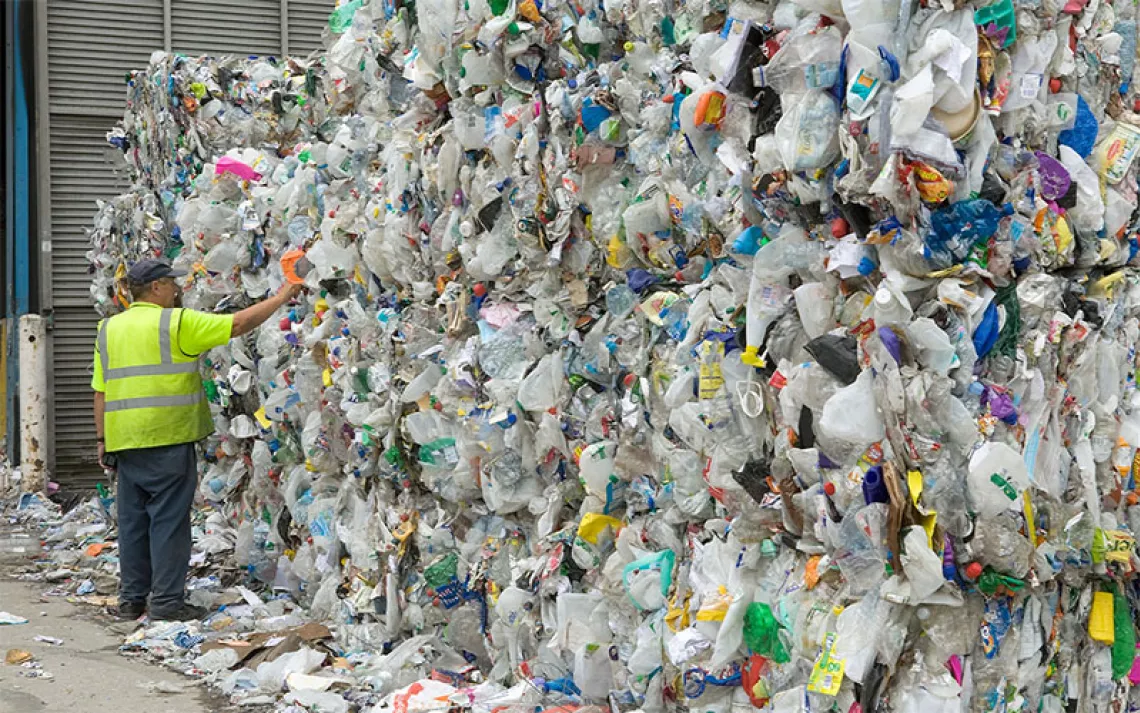How to (Really) Bid Good Riddance to Plastic
How we as individuals, consumers, and voters can battle the plastic scourge

Illustrations by Maggie Chiang
In the 1850s, what is now known as bioplastic—a material derived primarily from plants—was developed to replace rapidly depleting resources such as ivory and tortoiseshell. Since then, this product and its ubiquitous and everlasting petrochemical cousins have shaped the modern age, accelerating innovation as well as pollution and exploitation.
Sierra readers are well aware of plastic's toll—you don't need a lecture on the perils of single-use straws. But new research confirms that plastic is even more destructive than previously thought. It's a major contributor to climate change. Today, more than 99 percent of all plastics are derived from fossil fuels. Between its reliance on oil and gas extraction and its polluting production process, the US plastics industry emits a disastrous 232 million tons of greenhouse gases per year—the equivalent of 116 coal-fired power plants' emissions. Despite the magnitude of the problem, half of all plastics are designed to be used just once, and only 9 percent have ever been recycled.
The plastics and fossil fuel industries used the promise of recycling in misleading marketing for decades, perpetuating production while blaming consumers for plastic pollution. You can disrupt this status quo by pushing back against the entities truly responsible for this mess. Here's how we—as individuals, consumers, and voters—can drive the movement to combat the plastic scourge.
Beyond Recycling: Tackling Plastic Pollution From All Angles
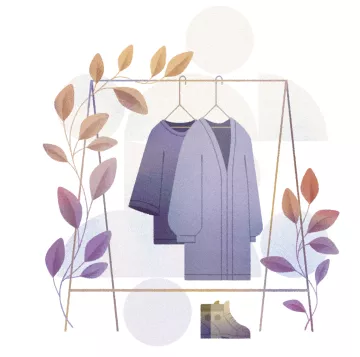
Going zero waste is a privilege for most, so prioritize progress over perfection. Here are some effective ways to focus.
Purchase With Purpose
Companies are making all sorts of goods from recycled plastic these days, but consumers should regard sustainability claims with caution. A little research into a business's practices goes a long way.
Cleanse Your Closet
Cheap clothing fashioned from plastic fabrics like polyester have made textiles the second-largest plastic-waste sector after packaging. Organic hemps, cottons, and recycled synthetic fabrics are the most eco-friendly alternatives to wearing virgin plastic. Less than 1 percent of clothing is recycled into new fibers, so donate old threads and purchase secondhand.
Curb Wishful Recycling
Cost-cutting municipalities are reducing recycling programs. Look into what your local recycling center handles, and use less of what it can't.
Compost With Care
Many compostable plastics require industrial-scale processes to break down, but few facilities incorporate them. In landfills and incinerators, compostable products emit methane and other planet-warming gases, negating their potential benefits. Sadly, most of today's "compostable" plastics just aren't.
Focus on Companies
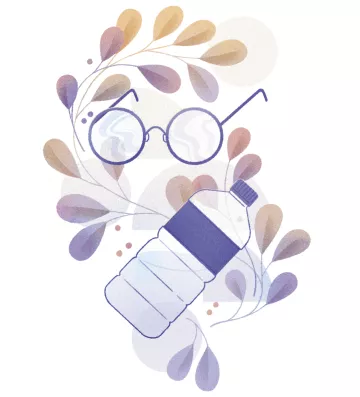
Businesses can meet the demand for sustainable products by cocreating a circular economy for plastics with their customers—generating jobs, improving communities, and reducing harm. They can also invest in natural alternatives to fossil fuel plastics, such as products made from algae, mycelia, or bacteria.
Pressure companies to develop closed- and open-loop product designs that reduce dependence on virgin plastics. Teva, for example, uses recycled plastic for 100 percent of its sandal straps and turns used sandals into new materials, while Dell pumps millions of pounds of computer plastics back into new products. Hospitals are recycling noninfectious medical waste like oxygen masks and IV bags. Even Coca-Cola has pledged that by 2030 it will collect, recycle, and reuse the equivalent of the plastic it produces.
Seek out companies that institute buyback programs and ones that make products from reclaimed goods. Genusee, for instance, manufactures eyeglasses from water bottles resulting from the Flint, Michigan, water crisis and offers customers credits in exchange for their worn-out eyewear.
Encourage businesses to support a binding UN treaty on plastic pollution, which would mandate national targets for reduction, harmonize regulatory standards, and support critical recycling infrastructure internationally.
Work With Lawmakers
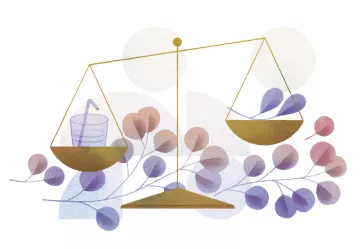
Low-income communities and communities of color worldwide are disproportionately burdened by plastic's production and refuse. Pressure elected officials to restrict the plastics industry and prioritize environmental justice and divestment from fossil fuels.
Ask lawmakers to pass the Break Free From Plastic Pollution Act, reintroduced by Oregon senator Jeff Merkley and California representative Alan Lowenthal in 2021, which would make companies financially responsible for their packaging through extended producer responsibility programs, phase out some single-use plastics, pause the construction and expansion of plastic-manufacturing facilities, and cease the export of plastic waste to developing countries.
This article appeared in the Spring 2022 quarterly edition with the headline "How to (Really) Bid Good Riddance to Plastic."
The Rise of Plastics
1870
Celluloid, one of the earliest plastics, is created by John Wesley Hyatt in response to a need for cheaper billiard balls, which back then were made from ivory.
1907
Chemist Leo Baekeland invents heat-resistant Bakelite, the first truly synthetic plastic made from fossil fuels.
1938
Nylon, the first completely synthetic fiber, is developed by DuPont's Wallace Carothers.
1955
Life publishes the article "Throwaway Living: Disposable Items Cut Down Household Chores," featuring a photo of a family gleefully tossing disposable products into the air.
1972
Science publishes the first two studies documenting plastic particles in the ocean. Lead researcher Edward J. Carpenter asserts that plastics-industry representatives attempted to intimidate him after the findings went public.
1988
The plastics industry introduces the resin identification coding system—numbers 1 to 7 on products—to improve post-consumer sorting. They all bear the recycling symbol, but only plastics #1 and #2 are frequently recycled.
1997
Captain Charles Moore discovers the Great Pacific Garbage Patch, a gyre of microplastics believed to be double the size of Texas at times.
2020
Microplastic particles are discovered in human placentas a year after the World Wildlife Fund reported that people ingest the equivalent of a credit card of plastic per week.
Eradicating Plastics
1984
A hundred million pounds of plastic are recycled for the first time in the United States in what is considered a groundbreaking feat.
1993
Patagonia becomes the first outdoor clothing company to make recycled polyester, turning soda bottles into fleece.
1997
Preserve launches its flagship toothbrush developed from recycled #5 plastic (the kind typically used in yogurt containers) and turns its used toothbrushes into new products.
2007
Leaf Rapids, a small town in Canada, claims to be the first municipality in North America to ban the use of plastic bags by local shops.
2014
California becomes the first US state to ban single-use plastic bags.
2018
PepsiCo acquires the seltzer-machine titan SodaStream for $3.2 billion. When describing the strategic deal, the company acknowledged that the future is in reuse.
2019
The Basel Convention forms a treaty to regulate the international trade in plastic recyclables and scraps to curtail pollution. The treaty is signed by 187 countries.
2021
The EU Directive on Single-Use Plastics takes effect, banning the sale of throwaway cutlery, plates, and straws as well as Styrofoam food and beverage containers.
 The Magazine of The Sierra Club
The Magazine of The Sierra Club


